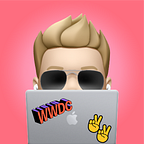Most often overlook how technology can be challenging, or impossible, for many to use. This oversight in the development of new technologies has created a digital divide in our world. People from across the globe are affected by their access, or lack thereof, to technologies such as computers, the internet, social media, and more. Even those who have access to these technologies can still struggle to use them if we don’t consider the awareness, knowledge, and abilities the user possesses.
Access to Digital Technology
In a constantly evolving digital world, all people must have access to the technology needed for full participation in today’s digital society. This participation includes social, employment, learning, and access to the essential services such as water and food that are widely accepted as fundamental human rights. Moving society into the digital era, this creates a divide within our communities, leaving many individuals and groups without the access to these services. According to the NDIA (National Digital Inclusion Alliance), the definition of Digital Inclusion is “the activities necessary to ensure that all individuals and communities, including the most disadvantaged, have access to and use of Information and Communication Technologies (ICTs).” They elaborate on this definition by sharing the “Five Elements” of Digital Inclusion:
- Affordable broadband internet services.
- Internet-enabled devices that meet the needs of the user.
- Access to digital literacy training.
- Quality technical support.
- Applications and online content designed to enable and encourage self-sufficiency, participation, and collaboration.
Digital Inclusion doesn’t stop there: it must evolve with technology. These advances will require continued investment and the development of new concepts, practices, and guidelines to eliminate digital exclusion.
But What is Digital Literacy?
Much how ‘literacy’ is the ability to find, understand, and share information in a physical world, ‘digital literacy’ is the ability to find, understand, and share information in a digital world. This means one is able to effectively use technology to gather, interpret, and judge information, while also understanding the relationship between technology, learning, personal privacy, and the stewardship of online information. Like exceptionally literate people, digitally literate people are able to share, communicate, and teach others about how to navigate their new digital environment.
Computer Literacy vs Digital Literacy
Computer literacy is heavily related to, but is not the same as digital literacy. Computer literacy measures one’s ability to use computers to research, create, and communicate with others efficiently, while maintaining an understanding of how they operate. These skill levels can range from an elementary use of technology to computer programming and advanced problem solving. The book “Program or Be Programmed” by Douglas Rushkoff elaborates on this skillset with the idea that “programming as the new literacy of the digital age” through the exploration of the question “do we direct technology, or do we let ourselves be directed by it and those who have mastered it?”
Along with enhancing Digital Inclusion, developing more than a surface level understanding of both skillsets are important in creating a world that is digitally inclusive, equal, and accessible.
